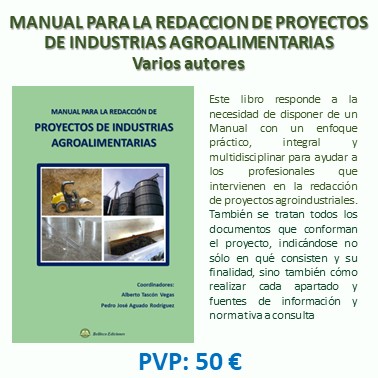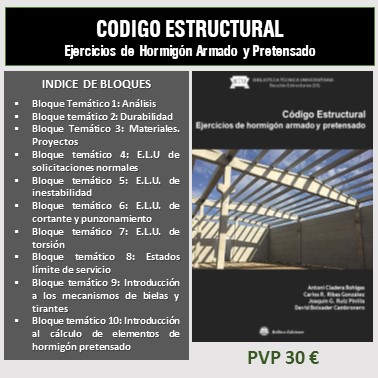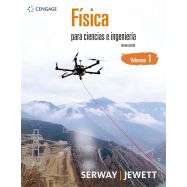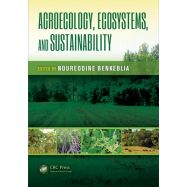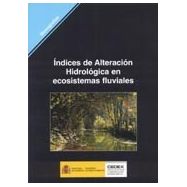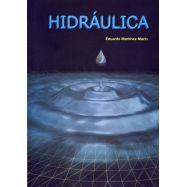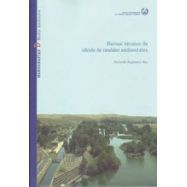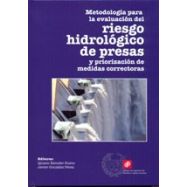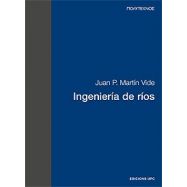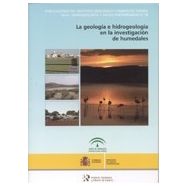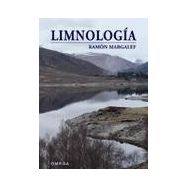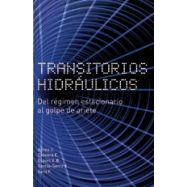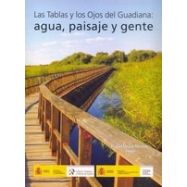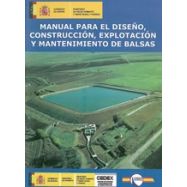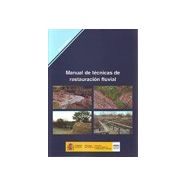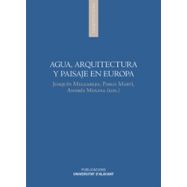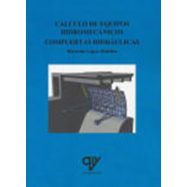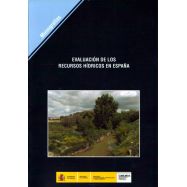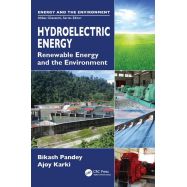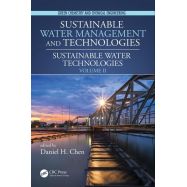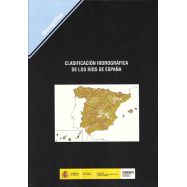Ningún producto
Materias
- BELLISCO EDICIONES. Nuestro Fondo Editorial
- FONDOS EDITORIALES EN DISTRIBUCION
- LIBROS TECNICOS EN INGLES
- ARQUITECTURA - URBANISMO
- AUTOMOCION - MOTORES - VEHICULOS
- AVIONICA - AERONAUTICA
- CALIDAD - EMPRESARIALES - GESTION
- CIENCIAS EXACTAS - MATEMATICAS
- CIENCIAS NATURALES Y APLICADAS
- CIENCIAS DE LA TIERRA - INGENIERIA DEL SUELO
- DICCIONARIOS TECNICOS
- ESTRUCTURAS - CONSTRUCCION
- FORMACION PROFESIONAL
- HIDRAULICA - INGENIERIA SANITARIA - AGUAS
- Abastecimiento y Distribución
- Águas subterráneas
- Tratamiento. Depuración y Reutilización de aguas
- Tuberías - Conducciones - Válvulas - Depósitos
- Mecanica de Fluidos
- Aguas, hidráulica e Ingª Sanitaria en General
- Novedades en Ingª Sanitaria, aguas, Hidráulica
- Hidrologia, Hidraulica Fluvial, Rios, cuencas y sedimentos
-
- INGENIERIA CIVIL - OBRAS PUBLICAS
- INGENIERIA MECANICA E INDUSTRIAL
- INSTALACIONES . GENERALES, EN EDIFICACION E INDUSTRIALES
- MATERIALES
- MEDIO AMBIENTE
- NORMATIVA
- OPOSICIONES
- PREVENCION DE RIESGOS LABORALES
- PROGRAMAS INFORMATICOS DE CALCULO
- TECNOLOGIA DE LOS ALIMENTOS: Industrias: Conservación, envasado y cadenas alimentarias
- TELECOMUNICACIONES - INFORMATICA - TECNOLOGIA DE LA INFORMACION
- OUTLET DE BELLISCO: Descuentos de hasta el 80%
- RELIGION, TEOLOGIA, MORAL Y ESPIRITUALIDAD
- VARIOS
- OFERTAS
- PROMOCIONES
- NEWSLETTER
- CATEGORIAS DESTACADAS
- ULTIMAS NOVEDADES BELLISCO
- ARQUITECTURA SOSTENBILE
- URBANISNO
- MATEMATICAS EN GENERAL
- AGRONOMOS-AGRICULTURA-FORESTALES
- ELECTROMAGENTISMO-ELECTRONICA-ELECTRICIDAD
- INGª Y MECÁNICA DEL SUELO. CIMENTACIONES
- TOPOGRAFIA, FOTOGRAMETRÍA, GEODESIA
- EDIFICACION
- ANALISIS DE ESTRUCTURAS, RESISTENCIA DE MATERIALES, ELASTICIDAD, CALCULO MATRICIAL
- OFICIOS VARIOS
- ABASTECIMIENTO Y DISTRIBUCION DE AGUA
- PUENTES
- TUNELES Y OBRAS SUBTERRANEAS
- MAQUINAS Y MECANISMOS
- SOLDADURA
- CLIMATIZACION
- INSTALACIONES DE AGUA
- INSTALACIONES ELECTRICAS CIENCIA E INGENIERIA DE MATERIALES
- ENERGIAS RENOVABLES
- DESARROLLO SOSTENIBLE
- INFORMATICA-SISTEMAS-FORMACION-PROGRAMAS
-
MODERN LAND DRAINAGE. Planning, Design and Management of Agricultural Drainage Systems
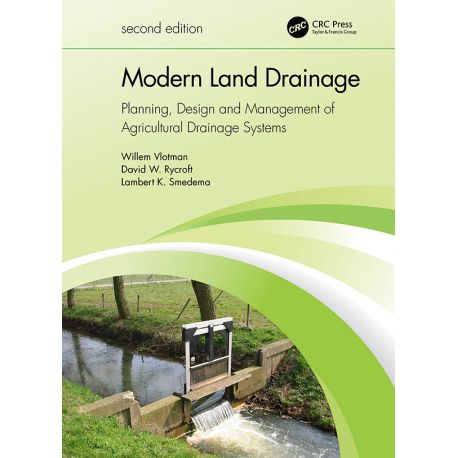 Ver más grande
Ver más grande Referencia: Código 08677
Mayo de 2020 - Willem F. Vlotman.. - Refª 8677
Es de particular valor para los profesionales que participan en el desarrollo del drenaje en el contexto de la gestión integrada de recursos hídricos y cuencas hidrográficas, ingenieros civiles y agrícolas, funcionarios gubernamentales, estudiantes universitarios y bibliotecas.
Willem F. Vlotman, Lambert K. Smedema, David W. Rycroft
Mayo de 2020 Páginas: 472
Código 8677 ISBN/EAN:
Book Description
Modern Land Drainage 2nd edition is a fully revised and updated edition of the 2004 edition. Modern Land Drainage describes traditional drainage formulas (Hooghoudt, Kirkham, Donnan, Ernst, Glover-Dumm) for rainfed agriculture in the humid temperature zone. Significant parts are devoted to drainage for salinity control of irrigated land in (semi-) arid zones, and to drainage of rice land in the humid tropics. Institutional, management and maintenance aspects are extensively covered, as well as the mitigation of adverse impacts of drainage interventions on the environment. The latest computer applications for drainage design in the context of integrated water management are described (DRAINMOD, HEC, SWAP, etc.). Field surveys are executed by governments, with the aid of consultants, but rarely are the end stakeholders (i.e., farmers and general public) involved from inception to planning to execution of a drainage system. Yet, during the Operation, Management and Maintenance (OMM) phase of a water management system, they are expected to takeover, run, bear and be responsible for the costs of OMM. The book describes successful methodologies and processes to be followed for engagement of stakeholders at all levels, from government to farm, from minister to farmer, and, from beginning to end. The book covers all aspects needed for sustainable drainage. The latest survey methodologies with satellites and drones are suggested to assess cause and effect. Waterlogging and salinity are the effect of something caused most likely upstream of the drainage problem location. Hence treating the cause may be more cost-effective. Triple Bottom Line (social, environmental and financial considerations) and the water-food-energy nexus are an integral part of the drainage design process. Controlled drainage, i.e. the balance of removal and conservation of drainage water and minimising solute transport as low as reasonably achievable (ALARA principle) is extensively described. This work is intended for use both as a university level textbook and as a professional handbook; it is of particular value to professionals engaged in drainage development in the context of integrated water resources and river basin management, civil and agricultural engineers, government officials, university students and libraries.
Table of Contents
PART I INTRODUCTION
1 LAND DRAINAGE FOR AGRICULTURE
1.1 Drainage Objectives; Scope of the Book
1.2 Global Drainage Zones
1.2.1 Temperate zone
1.2.2 Arid and semiarid zone
1.2.3 Humid and semi-humid zone
1.3 Agro-Hydrological Regimes
1.4 Waterlogging Control
1.4.1 Positive and adverse impacts
1.4.2 Responses to improved drainage
1.5 Salinity Control
1.6 Drainage Systems
1.7 Bio-Drainage
1.8 Environmental Impacts
1.8.1 Stream flow regimes
1.8.2 Water quality
1.8.3 Wetlands and conservation drainage
1.8.4 Public health
1.9 Drainage Development Considerations
2 PLANNING AND DESIGN CONSIDERATIONS
2.1 Design rainfall
2.2 Percolation of excess irrigation water
2.3 Design of field drainage systems
2.4 Determination of design criteria
3 REMOTE SENSING AND FIELD RECONNAISSANCE
3.1 Need for drainage and problem diagnosis
3.2 Remote sensing and aerial survey
3.3 Field investigations
3.4 Planning stakeholder engagement
3.5 Stages of project preparation
3.6 Operation, management and maintenance
4 ASSESSMENT OF COSTS
4.1 Required Information
4.2 Discounting
4.3 Evaluation Indices
4.4 Cost Evaluation of Open and Pipe Drainage Systems incl. O&M
4.5 Cost Calculations for Pipe Drainage Systems
4.5.1 Cost structure for pipe drainage construction
4.5.2 Guidelines for cost calculations
4.5.3 Example cost calculation
PART II INVESTIGATIONS
5 CLIMATE, LAND, SOIL AND ENVIRONMENT
5.1 Climate
5.1.1 Climate; soil moisture balance calculations
5.1.2 Climate: rainfall depth-duration-frequency studies
5.2 Topography
5.3 Soil and Land Conditions
5.4 Soil Parameters and Properties
5.4.1 Texture
5.4.2 Plasticity index
5.4.3 Bulk density and soil moisture content
5.4.4 Sample quantity and density
5.4.5 Data requirement for drain envelope design
5.5 Watertable and Groundwater
5.5.1 Watertable observation wells
5.5.2 Piezometric studies
5.5.3 Groundwater sampling
5.6 Hydrology and Geohydrology
5.6.1 Runoff and flooding
5.6.2 Outlet conditions
5.6.3 Geohydrological conditions
5.7 Agriculture and Irrigation
5.8 Pilot Areas and Field Testing
5.8.1 Types of pilot areas
5.8.2 Analysis of results of pilot areas
5.8.3 Visual drainage need assessment
5.8.4 Statistical analysis
5.9 Environmental Impact
5.9.1 Environmental impact assessment
5.9.2 Miscellaneous investigations
6 WATER IN THE SOIL
6.1 Forms and Nature of Occurrence of Water in the Soil
6.2 Pressures in the Soil Water
6.3 Soil Moisture Characteristics
6.4 Soil Water Potential and Soil Water Movement
6.5 Unsaturated Zone; Soil Moisture Constants
6.6 Infiltration and Percolation
6.7 Groundwater Flow; Laplace Equation
7 HYDRAULIC CONDUCTIVITY
7.1 Laboratory Measurement
7.2 Field Measurements below the Watertable
7.2.1 Augerhole method
7.2.2 Piezometer method
7.2.3 Drain outflow method
7.3 Field Measurements above the Watertable
7.3.1 Infiltrometer-method
7.3.2 Inverted augerhole method (Porchet method)
7.4 Composed K-Values
7.5 Surveys and Data Processing
PART III SYSTEMS AND TECHNOLOGY
8 SUBSURFACE DRAINAGE SYSTEMS
8.1 Pipe Drain Systems
8.2 Deep Ditch Systems
8.3 Drainpipes
8.4 Envelopes
8.4.1 Envelope need
8.4.2 Material selection
8.4.3 Envelope thickness
8.5 Envelope Design Guidelines and Criteria
8.5.1 Granular envelopes
8.5.2 Organic envelopes
8.5.3 Synthetic envelopes
8.6 Structures in Pipe Drain Systems
8.6.1 Surface water inlets
8.6.2 Inspection, junctions and control
8.6.3 Crossings
8.6.4 Outlet of a pipe drain into a ditch or canal
8.6.5 Sump outlet
8.7 Construction of Pipe Drain Systems
8.7.1 Setting out, depth and grade control
8.7.2 Installation methods and machinery
8.7.3 Construction and quality control
8.7.4 Timing of installation
8.7.5 Installation below the watertable
8.7.6 Backfill
9 SURFACE/SHALLOW DRAINAGE SYSTEMS
9.1 Bedding Systems
9.2 Shallow Ditch Systems
9.2.1 Types of shallow ditch systems
9.2.2 Some technical aspects of shallow ditch systems
9.3 Mole Drainage Systems
9.4 Pipe Drainage Systems
9.5 Complementary Measures
9.5.1 Sub-soiling
9.5.2 Deep ploughing
9.5.3 Chemical amendments and organic matter
9.5.4 Land levelling
10 MAIN DRAINAGE SYSTEMS
10.1 Main Features
10.1.1 Drainage basin (watershed, catchment)
10.1.2 Types and alignment of drainage canals
10.1.3 Outlet and water levels
10.1.4 Outlet Structures
10.2 Lowland and Upland Drainage
10.2.1 Lowland polder
10.2.2 River polders
10.2.3 Upland discharges
10.2.4 Drainage of urban areas
PART IV DESIGN
11 DESIGN OF PIPE DRAINAGE SYSTEMS
11.1 Flow Patterns
11.2 Drain Spacing Formulae
11.3 Hooghoudt Formula
11.3.1 Use of the Hooghoudt formula
11.3.2 Notes on the Hooghoudt formula
11.3.3 Drain spacing determination in anisotropic soils
11.4 Non-Steady State Drainage Formulae
11.4.1 Falling watertable (Glover-Dumm formula)
11.4.2 Fluctuating watertable (de Zeeuw and Hellinga formula)
11.5 Basic Design Criteria
11.5.1 Criteria for off-season drainage
11.5.2 Criteria for crop-season drainage
11.5.3 The impact of drain depth and drainable pore space
11.5.4 Drainage criteria determined by simulation
11.6 Drain Depth
11.7 Pipe Diameter
12 DESIGN DISCHARGES
12.1 Discharge Transformation
12.2 Design Considerations
12.3 Statistical Analysis of Observed Discharges
12.4 Flat basins
12.4.1 Subsurface drainage
12.4.2 Shallow drainage
12.4.3 Further guidance for flat basins
12.5 Sloping Basins
12.5.1 Rational formula
12.5.2 Curve Number method
12.5.3 Synthetic hydrographs
12.6 Area Reduction Formulae
12.7 Discharge Reduction through Storage
12.7.1 Retention reservoirs
12.7.2 Canal storage
13 DESIGN OF DRAINAGE CANALS, PUMPS AND STRUCTURES
13.1 Drainage Canals
13.1.1 Discharge rate
13.1.2 Hydraulic gradient and water levels
13.1.3 Permissible flow velocities
13.1.4 Cross-section
13.1.5 Roughness coefficient
13.1.6 Freeboard
13.2 Structures in Drainage Canals
13.2.1 Culverts and bridges
13.2.2 Weirs
13.2.3 Backwater curves
13.2.4 Example Canal Design
13.3 Tidal Outlets
13.3.1 Local variations in tide
13.3.2 Discharge through a sluice
13.3.3 Example of calculations
13.4 Pumps
13.4.1 Types of pumps
13.4.2 Pumping head and characteristics
13.4.3 Pump selection
13.4.4 Sump and intake design
13.4.5 Power and cost calculations
13.4.6 Example cost calculations of an electrically driven pump
PART V SALINITY CONTROL
14 SOIL SALINITY
14.1 Forms of Occurrence and Distribution of Salts in the Soil
14.1.1 The soil solution
14.1.2 Adsorbed cations
14.1.3 Equilibrium relationships
14.1.4 Distribution of salts in the soil
14.2 Agricultural Impacts; Diagnosis and Assessment
14.2.1 Osmotic problems
14.2.2 Toxicity problems
14.2.3 Dispersion problems
14.2.4 Corrosion problems
14.3 Classification
14.3.1 Classification systems
14.3.2 Field appearance
14.4 Conventional Mapping and Sampling
14.4.1 Sampling
14.4.2 Laboratory analysis
14.5 New Salinity Measurement and Mapping Techniques
14.5.1 The EM38
14.5.2 Time Domain Reflectometry
14.5.3 Remote sensing methods
15 IRRIGATION INDUCED SALINISATION
15.1 Salinisation by the Applied Irrigation Water
15.2 Salinisation from the Groundwater (Capillary Salinisation)
15.2.1 Critical watertable depth
15.2.2 Factors influencing capillary salinisation
15.3 Sodification
15.4 Salt Balance of Irrigated Land
15.4.1 Leaching requirement calculations
15.4.2 Regional salt balances
15.5 Irrigation Water Quality
15.5.1 Salinity hazard
15.5.2 Sodicity hazard
15.5.3 Toxicity hazards
15.5.4 Examples of irrigation water quality appraisal
16 DRAINAGE OF IRRIGATED LAND
16.1 Waterlogging and Salinity
16.2 Surface Drainage
16.3 Pipe Drainage Systems
16.3.1 Drain depth
16.3.2 Design criteria
16.3.3 Layout patterns
16.3.4 Pipe diameter
16.4 Well or Vertical Drainage
16.4.1 Types of aquifers
16.4.2 Design of well (vertical) drainage
16.5 Main Drainage
16.5.1 Design discharge
16.5.2 Disposal of saline drainage water
PART VI SPECIAL TOPICS
17 SEEPAGE AND INTERCEPTION
17.1 Drainage Systems for Sloping Land
17.1.1 Longitudinal drainage
17.1.2 Transverse drainage
17.2 Interception
17.2.1 Interception of seepage down the slope
17.2.2 Interception of Canal Seepage
17.3 Natural Drainage of River Valleys
17.4 Seepage into a Polder
17.4.1 Semi-confined flow
17.4.2 Phreatic flow
17.5 Seep Zones and Springs
18 RECLAMATION AND DRAINAGE OF UNRIPENED SOILS
18.1 The Soil Ripening Processes
18.1.1 Physical ripening
18.1.2 Other ripening processes
18.2 Reclamation and Drainage Methods
18.2.1 Early reclamation stage
18.2.2 Development of the hydraulic conductivity (K-value)
18.2.3 Advanced reclamation stage
18.2.4 Drainage, evaporation and ripening
18.3 Acid Sulphate Soils
18.3.1 Acidification processes
18.3.2 Neutralisation and reclamation
18.3.3 Diagnosis
18.4 Subsidence Prediction
18.4.1 Ripening subsidence
18.4.2 Settlement subsidence due to lowering of the watertable
18.4.3 Oxidation of peat soils
18.4.4 Experiences in the Netherlands
19 DRAINAGE OF RICE LANDS
19.1 Surface Drainage
19.2 Subsurface Drainage
19.3 Crop Diversification
19.4 Flood Control
20 CONTROLLED DRAINAGE
20.1 Issues and Developments
20.2 Design Considerations
20.2.1 Layout and technical provisions
20.2.2 Drain depth
20.2.3 Reuse arrangements
20.2.4 Discharge control and watertable management
20.3 Operation and Maintenance by Farmers
20.4 Controlled Drainage at the Regional Level
21 COMPUTER APPLICATIONS
21.1 Drainage Design Applications
21.1.1 Field systems
21.1.2 Canal systems
21.1.3 Preparation of drawings and documents
21.2 Rainfall Discharge Models
21.2.1 TR-20 model
21.2.2 HEC-HMS
21.3 Ground Water Flow Models
21.3.1 Spreadsheet models
21.3.2 MODFLOW and integrated programs
21.3.3 SGMP and SOURCE
21.4 Agrohydrological Models
21.4.1 DRAINMOD version 6
21.4.2 SWAP
21.5 Salinity Prediction Models
21.5.1 SALTMOD
21.5.2 WATSUIT
PART VII MANAGEMENT AND NEW DEVELOPMENTS
22 RESEARCH AND INNOVATION
22.1 Hydroluis Pipe-Envelope Drainage
22.2 Capiphone Drain
22.3 Precision Agriculture for Water Quality Control
22.4 Bi-level Subsurface Drainage
23 INSTITUTIONAL, ORGANISATIONAL AND FINANCIAL ARRANGEMENTS
23.1 Drainage Laws
23.2 Development and Management Models
23.2.1 Public/private good model
23.2.2 Participatory Development
23.2.3 Management Transfer
23.3 Public Drainage Organisation
23.4 Financing
23.4.1 Investments
23.4.2 Operation and Maintenance Costs
23.4.3 Fee Systems
24 MAINTENANCE
24.1 Classification
24.2 Organisation, Planning and Execution
24.3 Maintenance of Open Drainage Canals
24.3.1 Problems
24.3.2 Requirements
24.3.3 Methods and Equipment
24.3.4 Environmental considerations
24.4 Maintenance of Pipe Drains
24.4.1 Pipe Cleaning
24.4.2 Entry of roots
24.4.3 Chemical clogging (iron ochre, gypsum)
24.4.4 Access facilities
24.4.5 Costs
24.5 Developing Countries
25 PERFORMANCE ASSESSMENT AND BENCHMARKING
25.1 Drainage Design and Performance
25.2 Indicators
25.3 Performance Assessment Procedure
25.3.1 Preliminary Investigations (first step)
25.3.2 Primary Investigation (second step)
25.3.3 Cause Analysis (third step)
25.4 Performance Checking of Pipe Systems
25.5 Causes of Under-Performance of Drainage Systems
REFERENCES AND FURTHER READING
INDEX
ABOUT THE AUTHORS
TAMBIEN LE PUEDE INTERESAR
- 18,00 €
- 73,80 €
- 16,20 €
- 59,40 €


